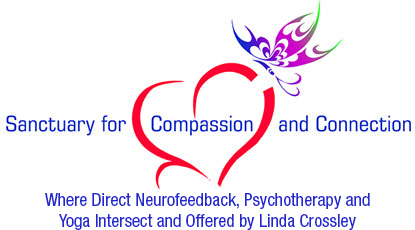5 Intention-setting Ideas to Build Resilience
“Every experience, no matter how bad it seems, holds within it a blessing of some kind. The goal is to find it.” ― Buddha
Research on resilience has shown that increasing our levels of resiliency correlates with improved overall health. Resilience can be defined as the ability to adapt well to change or bounce back after adversity. Life can be hard at times, but I won’t buy into the mantra that life is hard. If we can learn to go with the flow of life more quickly and stop banging our heads on the same wall thinking we will get a different result, we might just realize that life is full of beauty in any given moment or circumstance.
- Seek the Silver Lining!. Yoga, commonly understood to mean union, provides an alternative view of life than our culture, where independence – or being separate from others – is the goal if you want to be happy. When you view life through the lens of being separate, it guides you to pick a side, such as I am either happy or sad. However, when you view life through a yogic lens, or take a non-dual approach, then you realize you can’t experience happiness without sadness. And this applies to all emotions, thoughts, circumstances and experiences. So, the next time you hit a pothole in life, let it stop you for a moment of reflection and search for the goodness – the benefit – of the situation. If you search long and hard enough, you will always find the silver lining – and it might just be more valuable than the pot of gold at the end of the rainbow!!
- Move Toward the Pain. You will never be able to escape the pain, no matter how fast you run or how many things you add to your “To Do” list to distract yourself. The only way to get to the other side of pain, is through it. If you can’t feel it, you can’t heal it. So, once again, when you realize that you have hit a pothole in life, take a moment to get curious about the pain. Ask yourself, what is this pain telling me or what can I learn from this pain? Pain, and the accompanying mixed emotions, have great wisdom to offer and will revisit us often if we don’t learn to appreciate our natural emotional intelligence!
- Give Your Heart a Workout. The art of giving to, and receiving from, others has been shown to build empathy, compassion and gratitude, which have been shown to reduce harmful chemicals in our bodies while increasing positive hormones and neurotransmitters, such as oxytocin and serotonin. Giving to others does not need to be something tangible, like money or food. You might simply set an intention to give each person you interact with during one day a silent blessing, such as “may you too find happiness” or “may you live life with joy and ease”. Then reflect at the end of the day on how your heart feels. What may be harder for many of us is to gracefully accept the help of others when offered – receiving support is counter to our culture of independence. But just remember how you felt after your day of offering silent blessings to everyone you met and remind yourself that you make others feel good about themselves when you accept their generosity, whether it is their time or compassionate ear.
- Vibe with Your Tribe. Connect with friends and family that you know will understand what you are going through. Good relationships have been shown to increase resiliency during times of change. If you have a tendency to isolate yourself when you experience a painful situation, know that just being in the presence of other caring and compassionate people will be the balm to soothe the soul. If you don’t want to talk about it, that’s ok. Instead you might join a community event or find yourself in a yoga class with your favorite teacher!
- Perform Daily Acts of Self-care. Being kind to yourself does not mean you are selfish or lazy. It means you are committed to your health! And when you are healthy, you are in a better position to bring your gifts to the world. One of the most effective daily self-care practices is to take regular mental breaks throughout the day, even if it is only a minute or two each hour. Stopping what you are doing, closing your eyes, and taking 10 slow deep breaths allows the body and mind to process and integrate information taken in through our five senses. If you have more time, find yourself out in nature, maybe for a short walk or a longer hike, paying attention to your surroundings and what your five senses are experiencing in the moment. Laughter has also been shown to reduce tension, so watching a funny video or show might just be what the doctor orders! Just set an intention to do at least one activity a day that you enjoy or that you find relaxing for one week and then reflect on how you experienced your week overall. Let me know what you discover!



